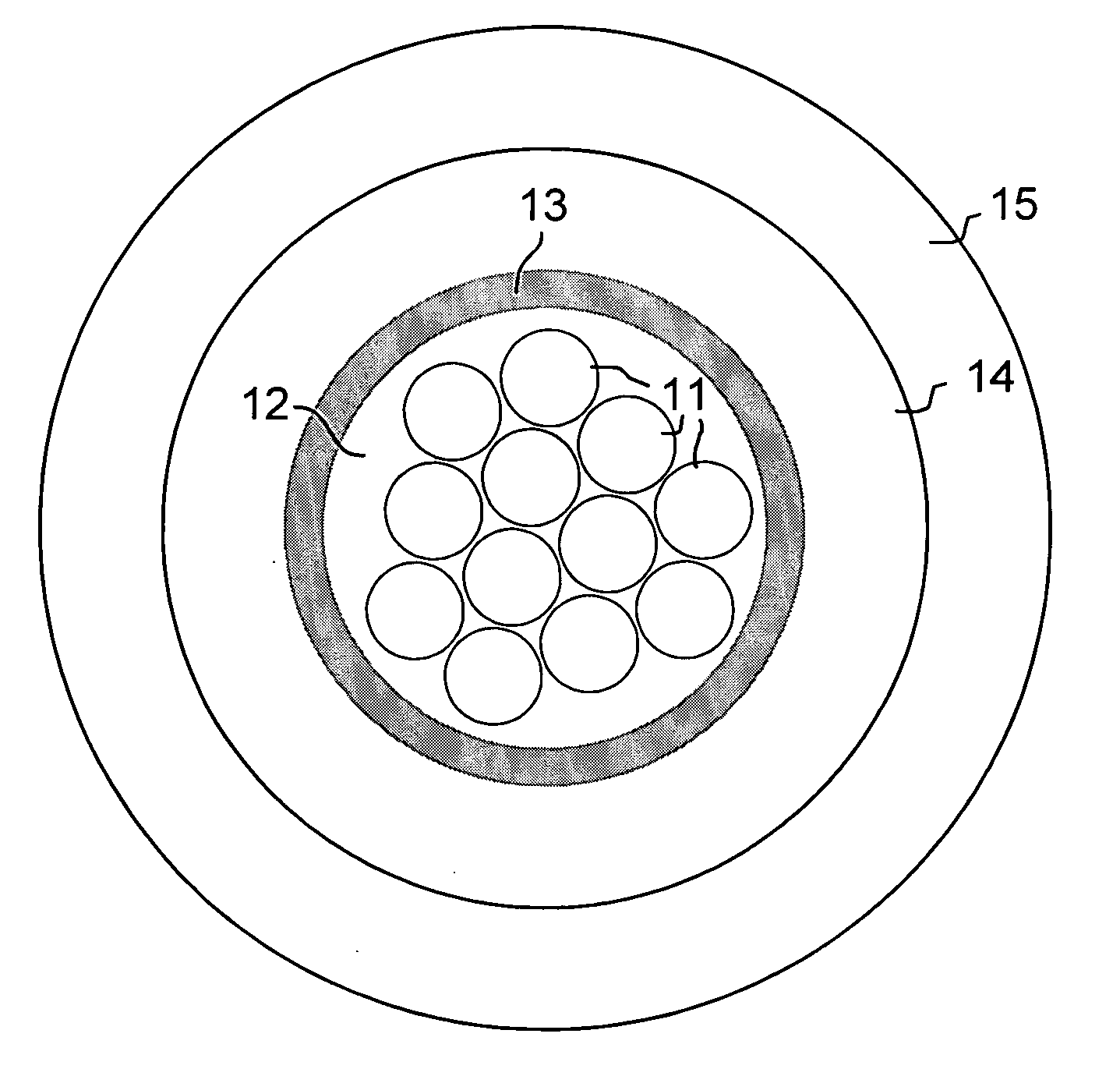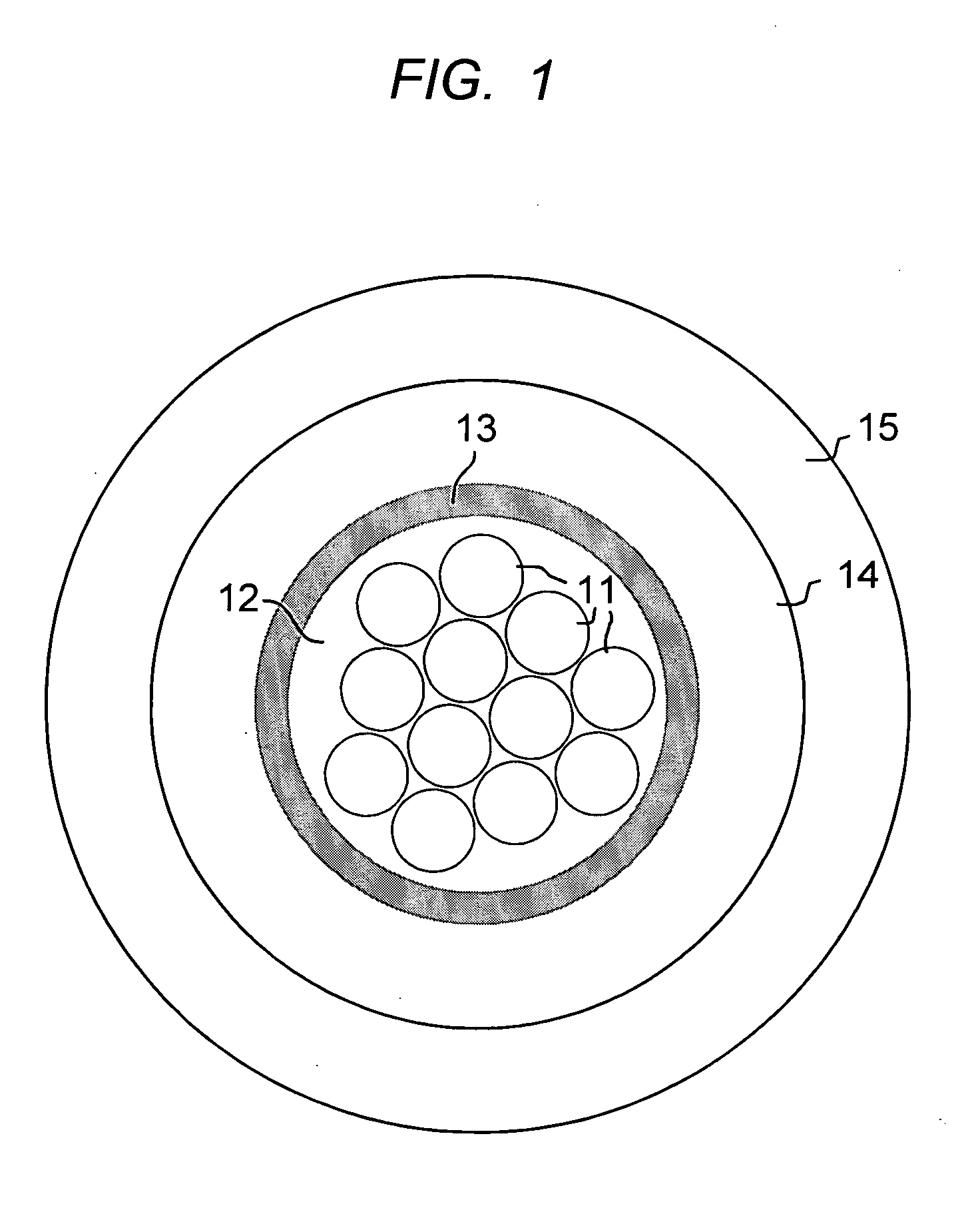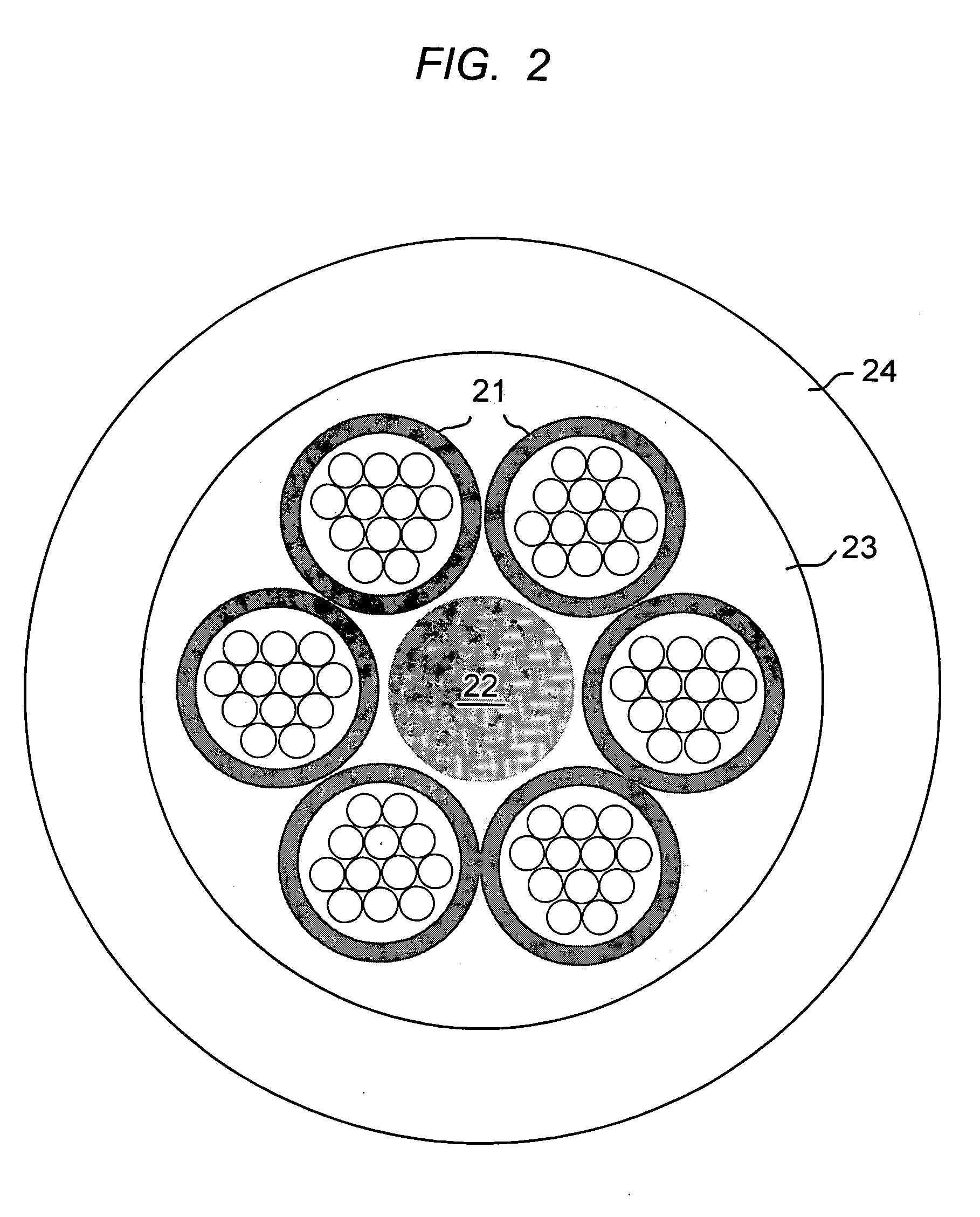Optical fiber cables
a technology of optical fiber cables and fiber optic cables, applied in the direction of optics, fibre mechanical structures, instruments, etc., can solve the problems of poor fiber management, flat cables are prone to twisting and kinking, and unsatisfactory cable performan
- Summary
- Abstract
- Description
- Claims
- Application Information
AI Technical Summary
Benefits of technology
Problems solved by technology
Method used
Image
Examples
Embodiment Construction
[0017]Referring to FIG. 1, a twelve fiber embodiment of the invention is shown with the twelve optical fibers 11, encased and embedded in a soft acrylate matrix 12. The elements in the figures are not drawn to scale. Surrounding and encasing the soft acrylate matrix is a relatively hard acrylate encasement layer 13. Together, the optical fibers, the acrylate matrix, and the acrylate encasement layer, comprise a round dual layer optical fiber buffer encasement. In this embodiment the optical fiber buffer encasement contains 12 optical fibers, but may contain from 2-24 optical fibers. Optical fiber buffer encasements with 4 to 12 optical fibers may be expected to be most common in commercial practice.
[0018]The dual-layer acrylate construction of the optical fiber buffer encasement, with the soft inner layer and hard outer layer, functions to minimize transfer of bending and crushing forces to the optical fibers, thus minimizing signal attenuation. Alternatively the optical fiber buffe...
PUM
 Login to View More
Login to View More Abstract
Description
Claims
Application Information
 Login to View More
Login to View More - R&D
- Intellectual Property
- Life Sciences
- Materials
- Tech Scout
- Unparalleled Data Quality
- Higher Quality Content
- 60% Fewer Hallucinations
Browse by: Latest US Patents, China's latest patents, Technical Efficacy Thesaurus, Application Domain, Technology Topic, Popular Technical Reports.
© 2025 PatSnap. All rights reserved.Legal|Privacy policy|Modern Slavery Act Transparency Statement|Sitemap|About US| Contact US: help@patsnap.com



